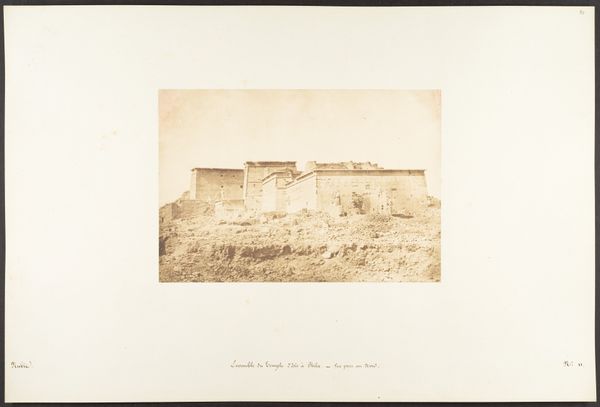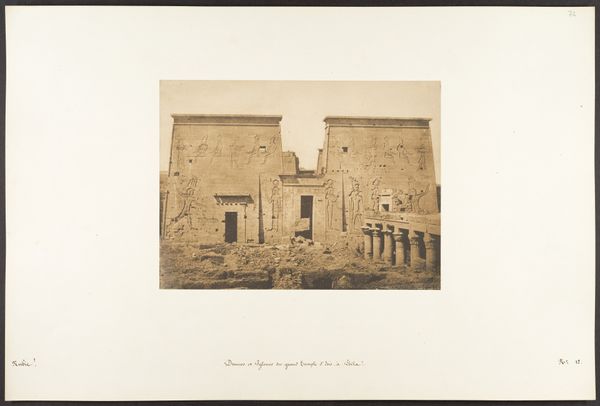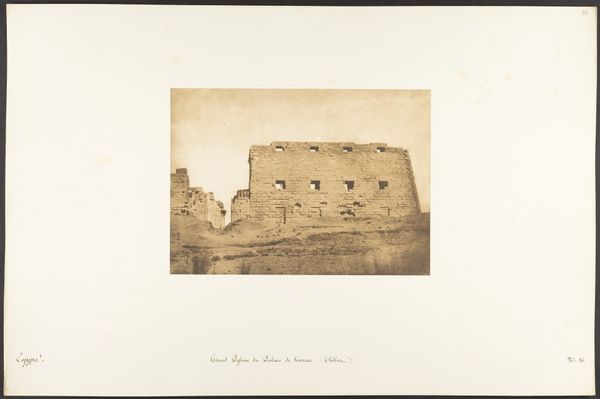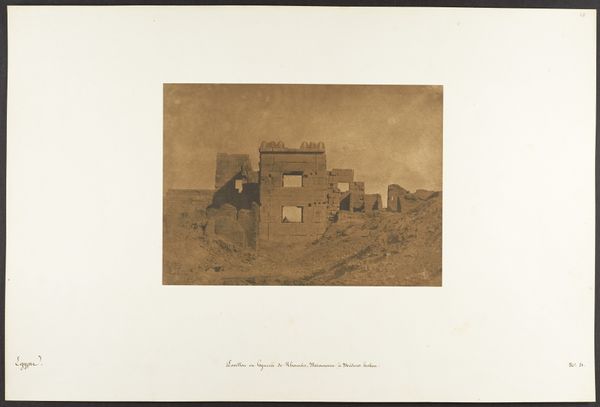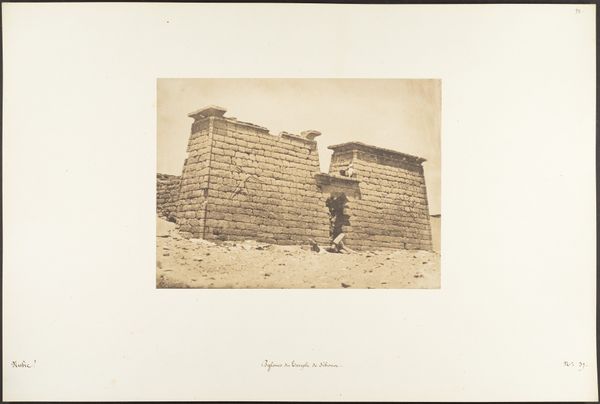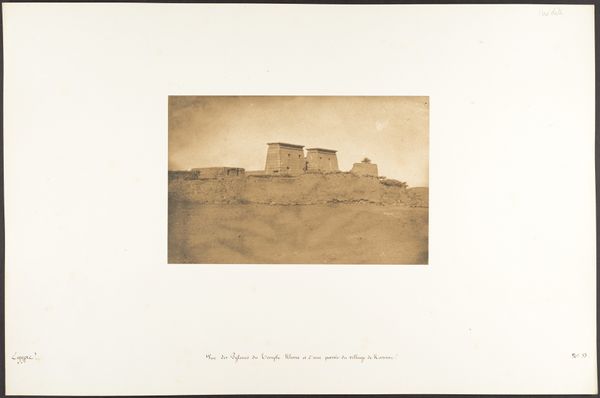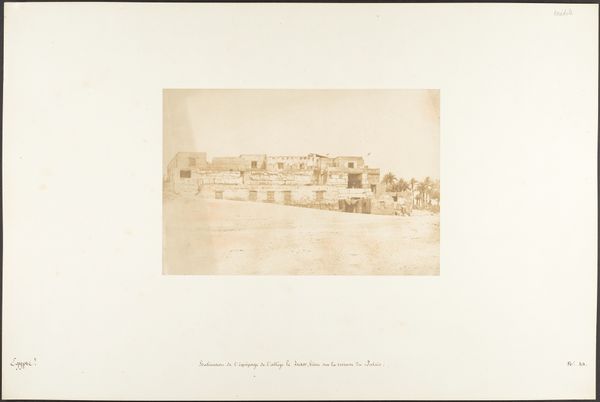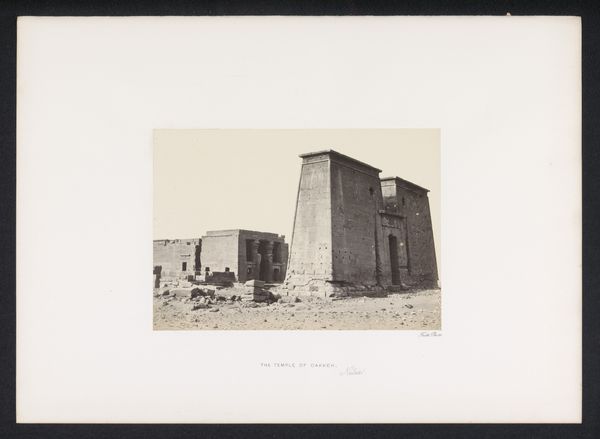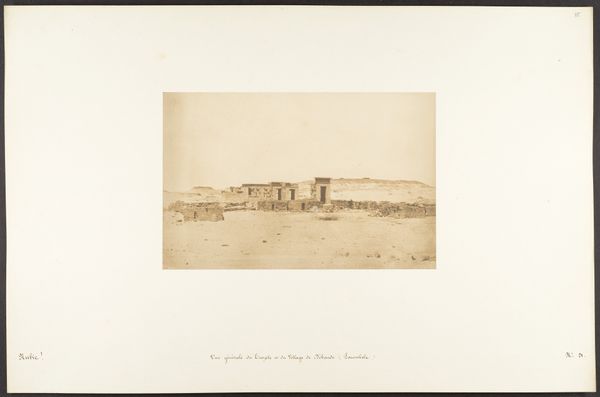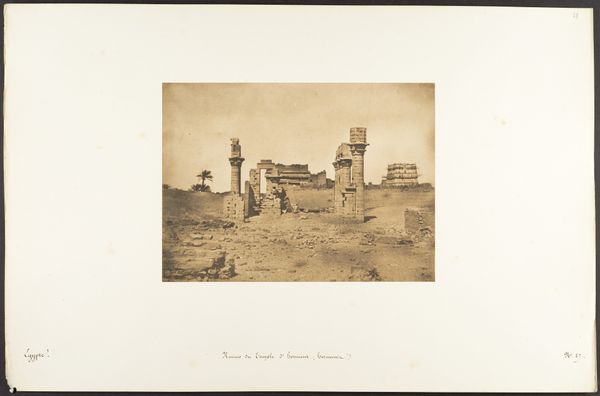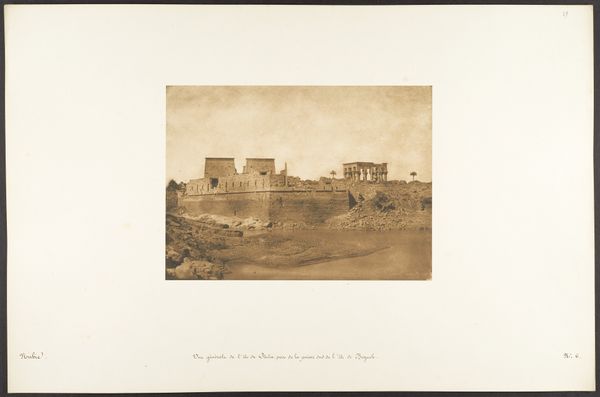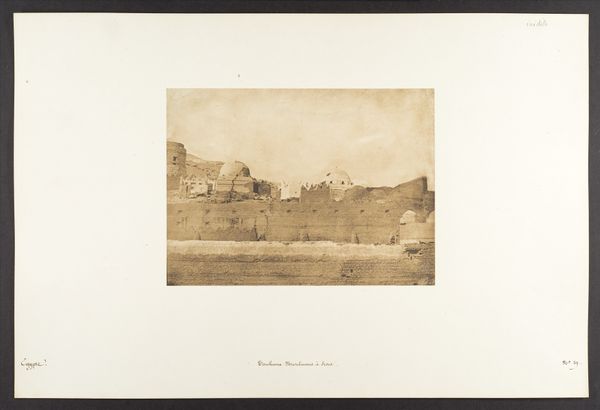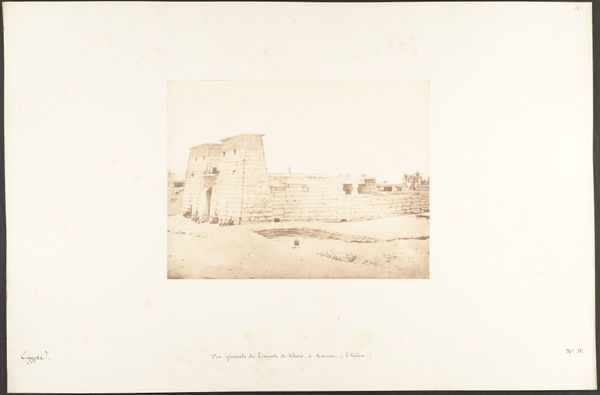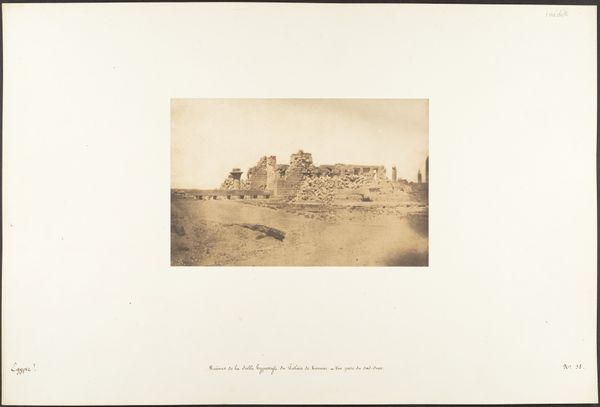
Vue générale du Temple de Dakkeh (Pselcis), prise au Nord 1850
0:00
0:00
photography, gelatin-silver-print, architecture
#
landscape
#
ancient-egyptian-art
#
photography
#
ancient-mediterranean
#
gelatin-silver-print
#
architecture
Dimensions: Image: 6 in. × 8 7/16 in. (15.3 × 21.4 cm) Image: 8 7/8 × 6 9/16 in. (22.5 × 16.7 cm) Mount: 18 11/16 × 12 5/16 in. (47.5 × 31.2 cm)
Copyright: Public Domain
This photograph of the Temple of Dakkeh was taken by Maxime Du Camp in the mid-19th century, using the salted paper process. This early photographic technique involved coating paper with a salt solution, then with silver nitrate, making it sensitive to light. The resulting print has a soft, warm tone, with a slightly textured surface, a direct consequence of the paper's fibers. The image is fixed through a series of chemical baths. Each print is unique, bearing the subtle marks of its making, a welcome contrast to today's mass-produced images. Du Camp's choice of photography, a relatively new medium at the time, speaks to the 19th-century fascination with documenting the world through mechanical means. Photography, like other forms of industrialization, changed our relationship to labor. Consider the amount of work involved in creating each print versus the relative ease of mass production today. This photograph, with its rich materiality and unique process, reminds us of the value of craftsmanship in a rapidly changing world.
Comments
No comments
Be the first to comment and join the conversation on the ultimate creative platform.
